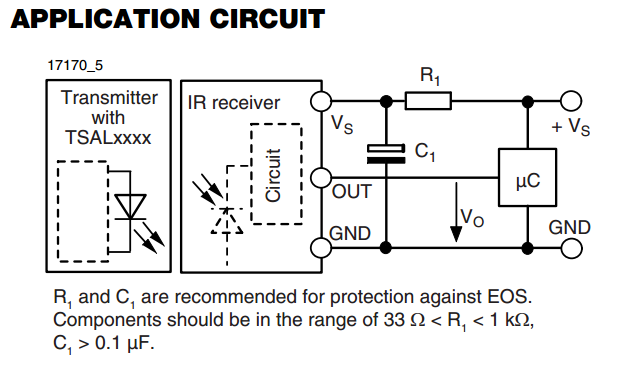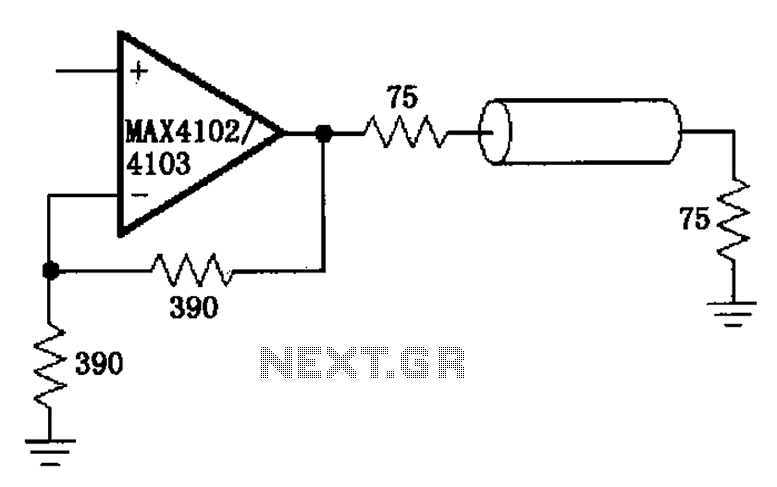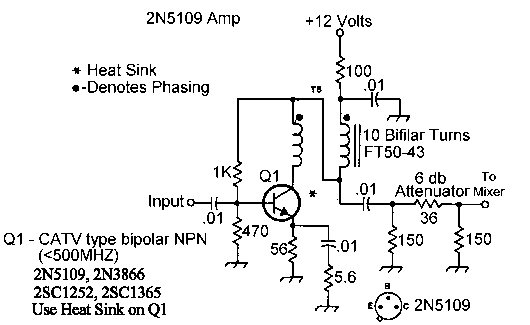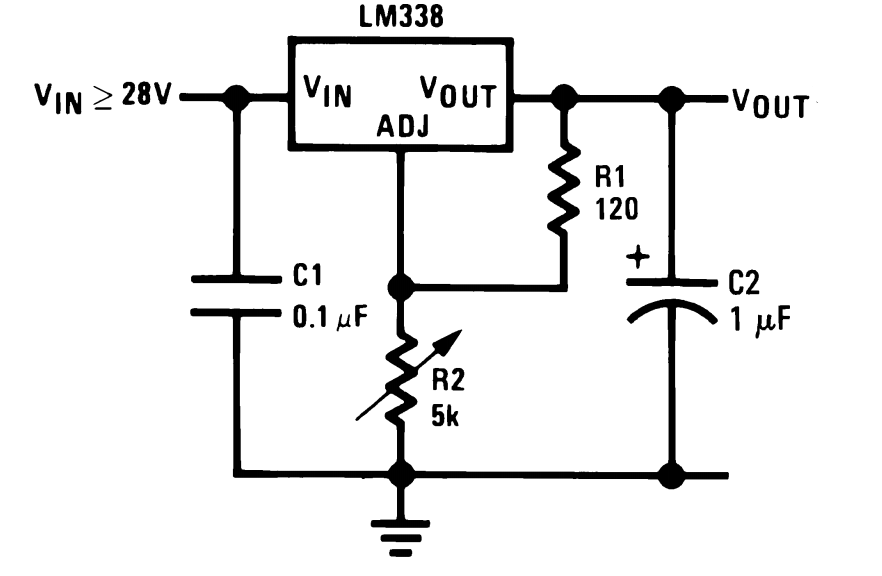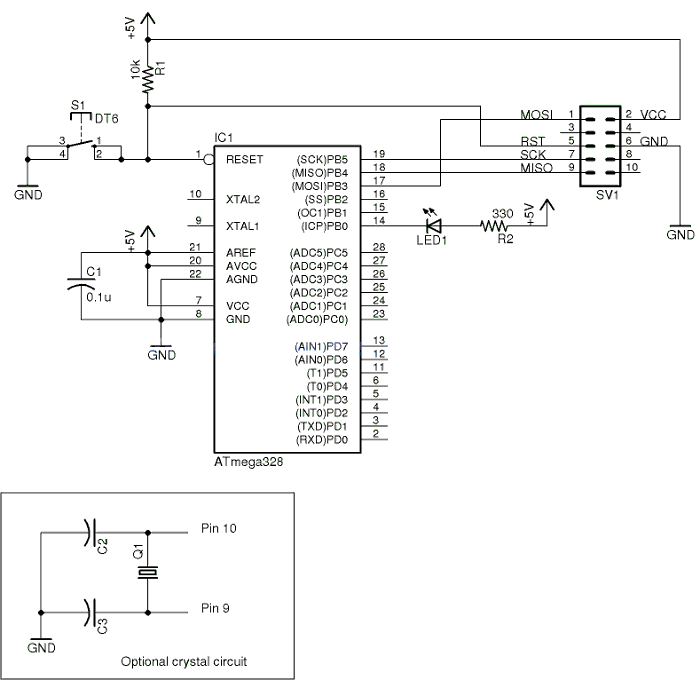
Reverse Joule Thief Battery Charger circuit
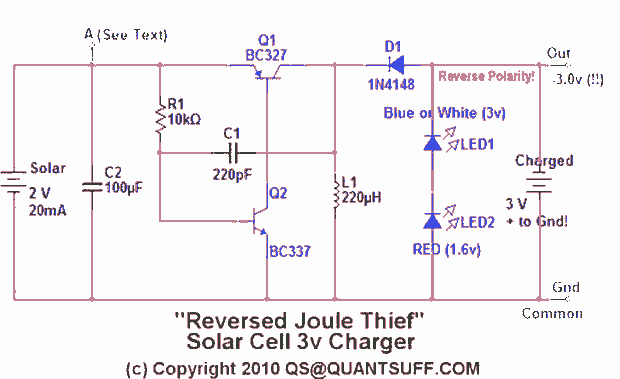
This design presents an innovative approach to the Joule Thief (JT) circuit typically utilized in garden lights. Instead of directly charging a 1.2V battery from the solar cell and converting the power to operate a 3-volt LED, this circuit employs the JT to first convert the solar cell's output to charge a Lithium battery. At night, this charged battery powers the LED directly. This method offers several advantages: (1) the selected Lithium cell, available for approximately $2, has a 3-volt output capable of directly driving a white LED, in addition to having a substantial capacity of 800mAh and minimal leakage. (2) Unlike traditional systems that can only charge a NiCd battery in full, direct sunlight, the JT circuit can provide power to the Lithium cell even during overcast conditions.
The Joule Thief circuit is a minimalist boost converter that can efficiently increase the voltage from a low input source, such as a solar cell, to a higher output voltage suitable for charging a Lithium battery. In this implementation, the solar cell's output is connected to the input of the JT circuit, which consists of a transistor, a resistor, and an inductor. The transistor acts as a switch, rapidly turning on and off to create a pulsed voltage that charges the inductor. The energy stored in the inductor is then transferred to the Lithium battery, allowing it to reach a charge level sufficient for nighttime operation.
The choice of a Lithium battery in this design is particularly advantageous due to its higher energy density compared to traditional NiCd or NiMH batteries. The selected battery's output voltage matches the requirements of the white LED, allowing for efficient operation without the need for additional voltage regulation. The low leakage current of the Lithium battery ensures that energy is conserved during periods of inactivity, enhancing the overall efficiency of the system.
This circuit design also provides flexibility in varying environmental conditions. The JT circuit's ability to operate effectively even in low light or overcast situations extends the usability of the solar energy harvested throughout the day, ensuring that the LED remains illuminated during the night. This feature is especially beneficial for outdoor applications, where consistent lighting is desired regardless of weather conditions.
In summary, this innovative Joule Thief circuit not only enhances the efficiency of solar energy utilization but also optimizes the performance of garden lighting systems by integrating a Lithium battery for reliable and effective LED operation.Here is a totally different take on the Joule Thief (JT) circuit commonly found in garden lights. Instead of charging a 1.2v battery directly from the solar cell and converting the power to run a 3-volt LED, well be using the JT to convert the output from the solar cell and charging a Lithium battery first. Then when night falls, the battery is used to drive the LED directly. This method has some advantages: (1) the Lithium cell that was chosen here (and avialable for $2 here) has an output of 3-volts, which can drive a White LED directly; it also has a huge capacity (800mAH) and very low leakage.
(2) The solar cell normally can only charge the NiCd battery in full, direct sunlight, but, with the JT circuit, it is able to deliver power to the Lithium cell even on overcast days. 🔗 External reference
The Joule Thief circuit is a minimalist boost converter that can efficiently increase the voltage from a low input source, such as a solar cell, to a higher output voltage suitable for charging a Lithium battery. In this implementation, the solar cell's output is connected to the input of the JT circuit, which consists of a transistor, a resistor, and an inductor. The transistor acts as a switch, rapidly turning on and off to create a pulsed voltage that charges the inductor. The energy stored in the inductor is then transferred to the Lithium battery, allowing it to reach a charge level sufficient for nighttime operation.
The choice of a Lithium battery in this design is particularly advantageous due to its higher energy density compared to traditional NiCd or NiMH batteries. The selected battery's output voltage matches the requirements of the white LED, allowing for efficient operation without the need for additional voltage regulation. The low leakage current of the Lithium battery ensures that energy is conserved during periods of inactivity, enhancing the overall efficiency of the system.
This circuit design also provides flexibility in varying environmental conditions. The JT circuit's ability to operate effectively even in low light or overcast situations extends the usability of the solar energy harvested throughout the day, ensuring that the LED remains illuminated during the night. This feature is especially beneficial for outdoor applications, where consistent lighting is desired regardless of weather conditions.
In summary, this innovative Joule Thief circuit not only enhances the efficiency of solar energy utilization but also optimizes the performance of garden lighting systems by integrating a Lithium battery for reliable and effective LED operation.Here is a totally different take on the Joule Thief (JT) circuit commonly found in garden lights. Instead of charging a 1.2v battery directly from the solar cell and converting the power to run a 3-volt LED, well be using the JT to convert the output from the solar cell and charging a Lithium battery first. Then when night falls, the battery is used to drive the LED directly. This method has some advantages: (1) the Lithium cell that was chosen here (and avialable for $2 here) has an output of 3-volts, which can drive a White LED directly; it also has a huge capacity (800mAH) and very low leakage.
(2) The solar cell normally can only charge the NiCd battery in full, direct sunlight, but, with the JT circuit, it is able to deliver power to the Lithium cell even on overcast days. 🔗 External reference
